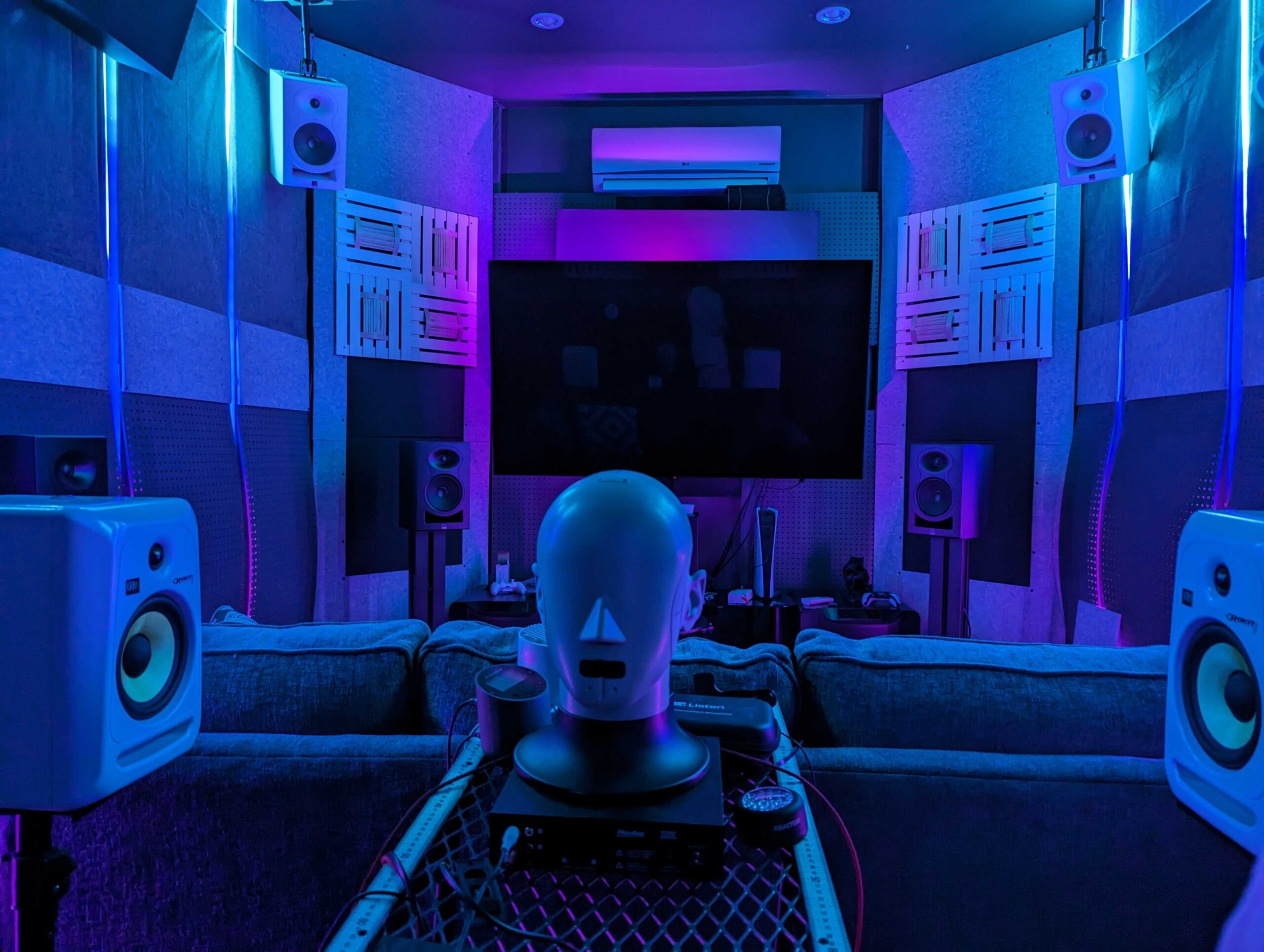All products featured are independently chosen by us. However, SoundGuys may receive a commission on orders placed through its retail links. See our ethics statement.
Best Headphones under $200
We tested headphones under $200 across ANC, design, battery, and comfort.
November 10, 2025
Adam is an Editor at SoundGuys specializing in gaming headsets, flagship headphones, and earbuds. A lifelong fan of video games and cinema, he brings a sharp ear and passion for immersive sound to every review. Beyond hardware, Adam writes thought-provoking features and opinion pieces that explore how audio tech shapes our lives. Armed with a BA in Cognitive Science, he pairs technical insight with a love for music’s psychological uplift. At home, he still rocks his original Sennheiser MOMENTUM over-ears, switches to Bose QuietComfort Ultra on flights, and relies on Galaxy Buds2 Pro while out and about.
Finding great headphones doesn’t mean spending a fortune — there are plenty of impressive options under $200. We’ve tested hundreds of models in our lab and highlighted the top performers that deliver the best mix of sound, features, and reliability. Our Headphone Score factors in ANC, durability, value, design, connectivity, portability, battery life, and comfort, so you can shop confidently knowing these picks excel across the board.
Compare table
Filter
- Compare tableProductVotes
- 36 total votes36 total votes
$200
8.4
7.6
8.4
6.9
7.7
8.0
7.5
9.5
9.9
9.0
9.0
- 24 total votes24 total votes
$80
8.3
7.2
8.1
6.7
9.5
8.0
7.7
7.5
9.9
9.5
8.5
- 13 total votes13 total votes
$100
8.2
7.1
8.0
6.5
9.0
7.5
7.0
9.0
9.8
9.0
8.0
- 10 total votes10 total votes
$130
8.1
6.1
7.3
7.5
8.4
7.0
8.5
7.5
9.9
9.0
8.3
- 3 total votes3 total votes
$80
7.9
7.2
8.0
6.0
9.5
6.0
7.0
9.0
9.9
8.5
8.0
- 1 total votes1 total votes
$180
7.9
5.0
7.4
6.9
8.2
7.0
7.0
8.5
9.8
8.8
8.6
- 2 total votes2 total votes
$84
7.7
7.0
8.1
6.5
6.5
8.0
7.0
8.0
9.8
8.0
8.0
- 0 total votes0 total votes
$148
7.7
5.2
6.7
6.5
6.8
7.0
7.5
9.0
9.7
8.0
8.6
- 3 total votes3 total votes
$149
7.6
4.2
6.5
6.0
7.5
7.0
7.6
9.0
9.9
7.9
8.2
- 0 total votes0 total votes
$200
7.5
3.6
0.0
8.5
7.0
7.0
7.0
8.5
9.9
9.0
8.5
- 1 total votes1 total votes
$200
7.4
7.5
8.5
6.5
4.0
6.0
7.0
9.0
9.0
9.0
8.0
- 2 total votes2 total votes
$198
7.1
3.4
0.0
6.9
7.7
7.6
7.3
9.0
9.9
7.2
6.9
Product chart
In the chart above, you can see how each of the headphones compares in terms of price and performance.
To gather information about how well each of the earbuds and headphones work, we subject each product to a number of objective tests. We use a Bruel & Kjaer 5128 acoustic measurement system to test headphones and earbuds in our SoundGuys lab. The ear canal of the artificial head was created by averaging and smoothing 3D models of individual ear canal features from the MRI scans of 40 different people.

We perform the following testing to determine the best headphones and best earbuds:
- We run sequences to determine the best fit of the headphones, and if there are any manufacturing issues with the product.
- We measure the headphones’ performance and compare the frequency response to our industry-validated SoundGuys Headphone Preference Curve to give context to readers.
- To rate sound quality, we use the Multi-Dimensional Audio Quality Scores (MDAQS) algorithm from HEAD acoustics. These are virtual mean opinion scores as calculated by a powerful machine learning model based on the input of real listeners.
- We play several samples of shaped noise over loudspeakers to test noise canceling and record with our artificial head. We take samples with ANC on, ANC off, and with the headphones off the head. After subtracting the appropriate curves from each other, we can see how well the headphones block out noise.
- To evaluate microphone quality, we play pre-recorded spoken Harvard sentences from a calibrated artificial mouth in our test chamber, either with or without simulated background noises, simulated reverberant spaces, or artificial wind.
- To measure battery life, we play back music through the headphones or earbuds peaking at 75dB(SPL), a safe and realistic listening level.
In addition to objective testing, our team of audio experts uses each of the headphones and earbuds to evaluate the experience of using the product. By wearing the headphones in day-to-day use, we evaluate the comfort, noting any pain points. We also make sure to try out each of the features that the headphones have to offer, such as using the equalizer in the companion app.
Using a combination of subjective and objective testing, we score each product. To learn more about how we evaluate headphones and earbuds, check out our in-depth explainer on how we test.

Here at SoundGuys, we’ve been testing audio products for over a decade. Our team comprises audio product experts who have tested hundreds of different headphones, earbuds, and speakers. Moreover, our team comes from diverse backgrounds and a wealth of expertise, including audio engineering, film production, journalism, podcasting, music production, and even touring musicians.
Everything we recommend results from our objective measurements and great subjective experiences. Ultimately, we want you to enjoy your purchase or, at the very least, leave our site with a little more knowledge about the inner workings of audio. To see why you can trust us with your purchase decision, make sure to check out our ethics policy.
Poll
How much are you willing to spend on good headphones?
Best overall pick: Sony ULT WEAR

We pick the Sony ULT WEAR as our best overall choice because it balances strong ANC, long battery life, modern wireless features, and comfort. In our testing the ULT WEAR delivered over 32 hours and 35 minutes of playback and achieved more than 25dB of attenuation above 80Hz, making them effective for commutes and flights. They support Bluetooth 5.2 with LDAC and multipoint, and the Sony Sound Connect app lets you tame the headphones’ pronounced bass—especially the big ULT button that boosts low end. Our MDAQS analysis also flags the ULT WEAR as bass-forward, which affects some of its audio metrics unless you use EQ. The ULT WEAR also earned recognition across other areas, and we note they additionally hold Best ANC, Best Battery Life, Best Call Quality, Best Over-Ear Headphones, Best for iPhone users, and Best for Comfort distinctions based on their combination of features and measured performance.Sourced from Sony ULT WEAR review – SoundGuys.
Best Value pick: JLab JBuds Lux ANC


The JLab JBuds Lux ANC earns our Best Value pick for offering ANC and long runtime at a budget price. In our battery test they lasted about 44 hours and 22 minutes, and the folding, lightweight design makes them easy to carry for daily commuting. Their ANC is solid for the price: roughly 10–20dB of cancellation under 700Hz with very good passive sealing at higher frequencies, and the companion app provides a 10-band EQ to tune the sound. Controls are simple physical buttons, and the headphones fold compactly for travel. For buyers prioritizing features per dollar, the JBuds Lux ANC is a strong option.Sourced from JLab JBuds Lux ANC review – SoundGuys.
Best Best for Android users pick: Anker Soundcore Space One

The Anker Soundcore Space One is our pick for Android users thanks to LDAC support and a broad feature set. They use Bluetooth 5.3, offer LDAC for higher-bitrate streaming on compatible Android devices, and include multipoint connectivity plus a wired aux option for flexibility. In our battery test the Space One ran about 42 hours and 57 minutes with ANC on, and the Soundcore app provides HearID tuning, an eight-band EQ, and adaptive ANC controls. The headphones are lightweight and foldable, with physical buttons and useful app extras like a decibel meter. If you primarily use Android and want codec support alongside strong app customization, these headphones stand out.Sourced from Anker Soundcore Space One review – SoundGuys.
Best Sound Quality pick: JBL Live 670NC

The JBL Live 670NC takes our Best Sound Quality pick for its lively, well-balanced tuning and strong measured performance. In our testing the Live 670NC delivered an overall MDAQS score around 4.8 and produced a bass-forward but controlled sound that many listeners will enjoy, with EQ and spatial sound options in the app. Battery life impressed too: we measured about 54 hours and 57 minutes of playback, and ANC performance approaches 30dB of attenuation near 250Hz, which helps on planes and buses. The on-ear, foldable design makes them especially portable, and adaptive ANC plus Ambient Aware give flexible situational control. For listeners who prioritize the best measured and subjective sound in this group, the Live 670NC are a strong choice.Sourced from JBL Live 670NC review – SoundGuys.
Our verdict
Across wireless and wired headphones in the sub-$200 range, the Sony ULT WEAR is our pick for overall balance: it pairs effective ANC and long battery life with modern codecs and multipoint connectivity, while its bass-forward tuning is easily adjusted in the app. The JBL Live 670NC is the best-sounding option here, with a strong MDAQS result and very long battery life, while the Anker Soundcore Space One is the best match for Android users because of LDAC and deep app customization. The JLab JBuds Lux ANC is the top value pick, delivering respectable ANC and exceptional runtime for budget-minded buyers.
Remaining models cover other buyer needs: the EarFun Wave Pro offers exceptional battery life (about 52 hours) and LDAC on a budget but received only middling MDAQS sound scores; the Sennheiser ACCENTUM Wireless targets affordable ANC with USB-C audio support, broad codec compatibility, and about 46 hours of battery life while omitting a carry case; and the Sony WH-XB910N is geared toward bass-focused listeners, includes a wired 3.5mm option, and offers a comfortable fit but has inconsistent touch controls. These summaries reflect the measured strengths and limits in each review and should help you choose within the wireless/wired headphone category and the under-$200 price band.
FAQ
-
On-ear rest on your ears, smaller and more portable.
-
In-ear (earbuds) fit inside your ear canal, most compact.
-
Wired can offer more consistent sound quality and no battery worries.
-
Wireless adds freedom of movement, Bluetooth features, and portability.
-
Over-ear headphones with strong ANC work best on planes and trains.
-
Compact earbuds are great for commuting and portability.
Higher-priced models usually have better ANC, premium materials, wider soundstage, and extra features.
Active Noise Cancelling uses microphones to cancel out external noise for a quieter experience.
Open-back designs allow air and sound to pass through, creating a wider, natural soundstage but leaking sound. Closed-back isolate better and have more bass punch.
No, it’s a premium feature. Multipoint is useful if you switch often between laptop and phone.
Yes, by reducing background noise so you don’t need to turn up the volume. But listening too loud can still cause damage.
Isolation refers to the ability of your headphones to block outside noise from reaching your ears. This might sound like active noise cancelation, but it isn’t. Active noise canceling uses microphones to pick up the sounds that are going on around you and then uses clever processing to cancel them out. In physics, it’s called destructive interference, and you can learn more about that in our article on how noise canceling works, but that isn’t what isolation is.
Isolation is simply having a physical barrier between your ears and the outside noises. Every time you stuff your fingers in your ears, you’re isolating yourself. You might hear certain loud noises around you, but for the most part, sounds are blocked out. A good pair of over-ear headphones can do something similar. They’ll cover your ears and block noises that would otherwise interfere with the music you’re listening to.
Not yet. While Bluetooth has become way better and more convenient in the last few years, it still can’t compete on a technical level with wired over-ear headphones. Sure, we might be a little biased against removing the headphone jack. Still, even our objective testing of the LDAC codec (which is arguably one of the top transfer methods currently available) revealed that Bluetooth falls short. Of course, you probably won’t have to worry about it too much if you’re over the age of 24 because our hearing tends to go a lot sooner than you might realize, but it’s still something you should be aware of. At least for now, wired headphones still reign supreme.
Over-ear headphones generally offer superior sound quality due to their larger drivers and better isolation, which minimizes ambient noise and allows for a more immersive listening experience.
Thank you for being part of our community. Read our Comment Policy before posting.